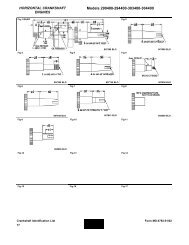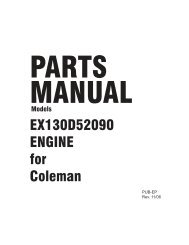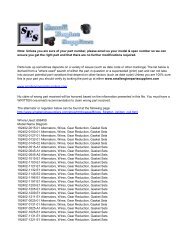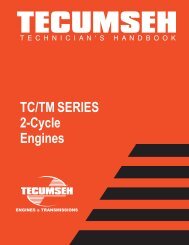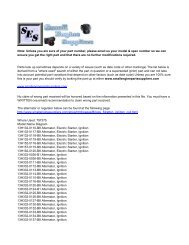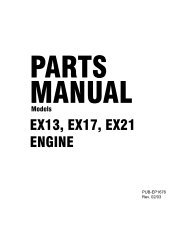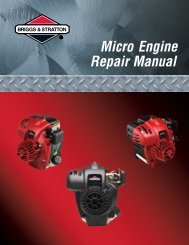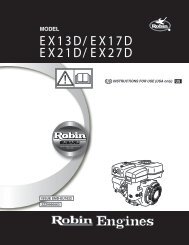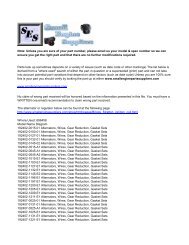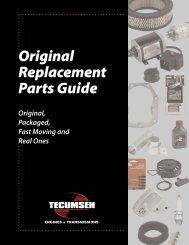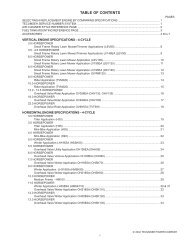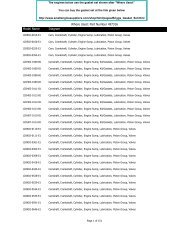Quick Facts Mini Version 695933 - Small Engine Suppliers
Quick Facts Mini Version 695933 - Small Engine Suppliers
Quick Facts Mini Version 695933 - Small Engine Suppliers
- No tags were found...
You also want an ePaper? Increase the reach of your titles
YUMPU automatically turns print PDFs into web optimized ePapers that Google loves.
PreparationBasic Gear Drive TroubleshootingNOTEBefore troubleshooting any system problem, see original equipment manufacturer’s (O.E.M.) instructions.Make your troubleshooting easier by preparing as follows:• Work in a clean, well-lighted place.• Keep proper tools and materials nearby.• Keep an adequate supply of clean petroleum-based solvent.To avoid carbon monoxide poisoning, make sure engine is outdoors in a well-ventilated area.Some maintenance procedures can not be performed until the vehicle wheels are secured andoff the ground. Failure to do so could result in death or serious injury to yourself and/orbystanders.DO NOT attempt any maintenance procedures with the engine running. Doing so could result indeath or serious injury to yourself and/or bystanders.Use care when performing inspection of the drive belt assembly including all vehicle linkage.Failure to do so could result in death or serious injury to yourself and/or bystanders.Hard Shifting Transaxles and Drive BeltsOften hard shifting is blamed on an internal problem in the transaxle.To determine if the problem is transaxle or equipment related make these simple checks.1. Turn the unit off so that all power is removed to the transaxle.2. With the unit off, move the shift lever through the shift gate. Movement of the lever should have only slightresistance. The shifting effort should be equal when the engine is off and when running. If the unit is difficultto shift the problem would be internal and the transaxle would need to be removed and repaired.3. If the unit shifts with ease, check the following areas that would be equipment related. Check to see if the beltis releasing from the pulley on the engine and transmission / transaxle, it may require that the belt guides berepositioned. The distance required from the pulley to the guide is typically 1/16" to 3/16" (1.6 mm - 4.8 mm),always check the O.E.M. specs.1/16" to 3/16"(1.6 mm - 4.8 mm)THIS DIMENSIONVARIES FROM EACHMANUFACTURERFor proper declutching to occur, it is very important thatthe engine belt guide be set at a predetermined clearancewhen engaged (set by the manufacturer) and away fromthe belt with the belt engaged.With clutch disengaged, it is very important that thebelt blossoms away from the engine pulley. Belt muststop turning before transaxle shifting can occur.Improper belt or belt guide clearance will not allow the belt to disengage, causing internal transmissiondamage.20



